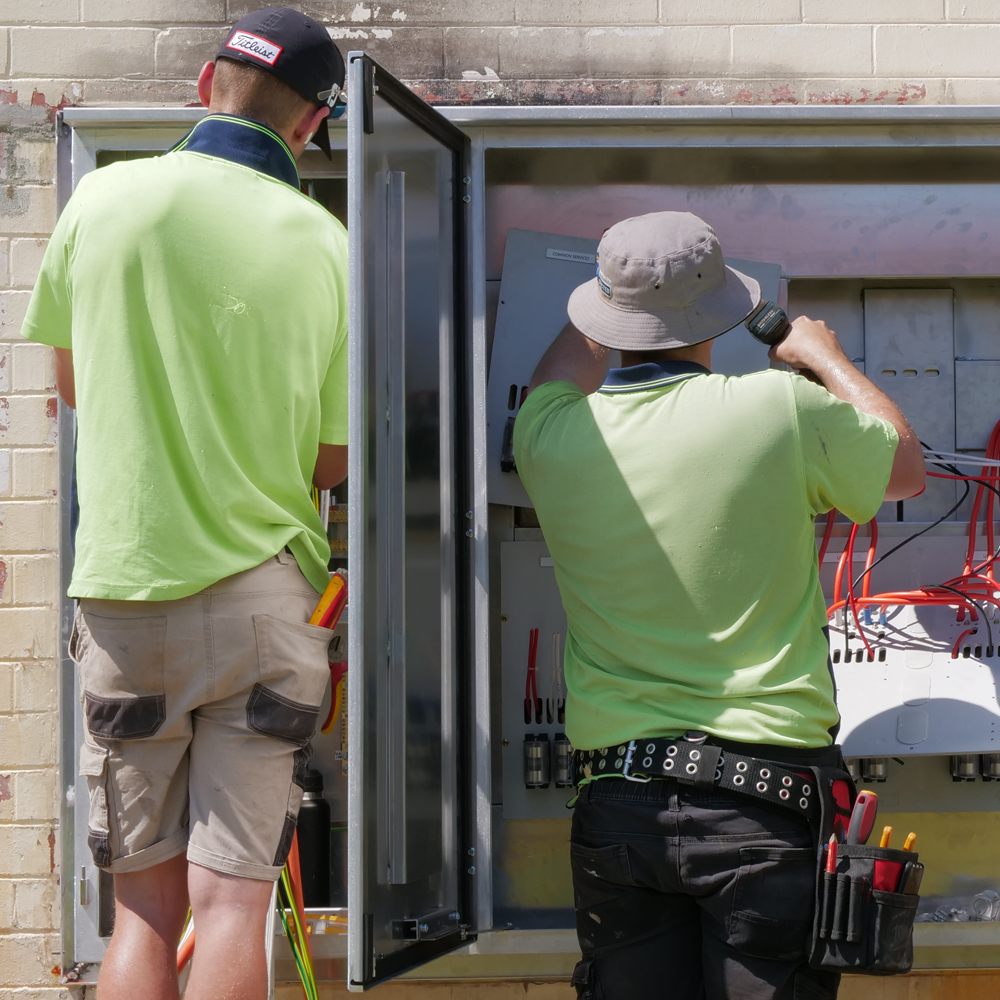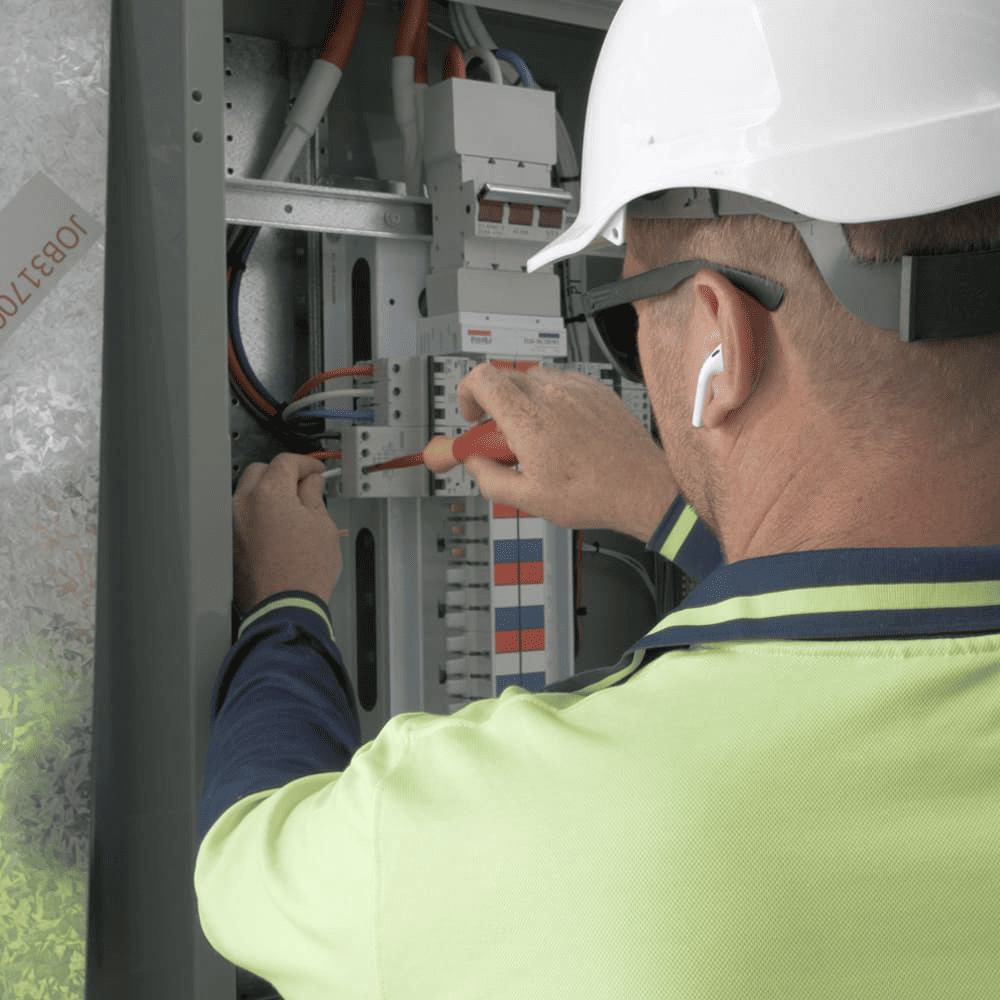Electrical systems in strata and commercial buildings carry heavier, more complex loads than a typical home. Common areas, lifts, HVAC plants, tenancy fitouts and essential services all draw power at different times. Over time, demand changes while components age.
An electrical safety audit gives owners corporations, committees, facility managers and landlords a clear picture of condition, risk and compliance, with a practical plan to fix issues in order of priority.
Electrical & Safety Audits: What it Actually Entails
An electrical safety audit is a structured review of a building’s electrical installation. It combines visual inspections, instrument testing and data logging to check load balance, wiring condition, protective devices, earthing and documentation.
The auditor compares measured results against Australian standards and local requirements, then explains where the installation is safe, where it is drifting from best practice, and what should be done next. The focus is practical outcomes, not long theory.
Why Strata and Commercial Buildings Need Electrical & Safety Audits
Strata and commercial buildings change often. Tenants move in and out, new equipment is installed, and small alterations stack up. These changes can shift loads, create documentation gaps and leave circuits working harder than intended.
Ageing switchboards, heat in plant rooms, and vibrations in service risers add stress. Shared infrastructure also means a single fault can affect multiple tenants or critical systems.
Regular audits reduce surprises. They help catch loose terminations before hotspots form, correct poor discrimination that causes nuisance trips, and identify non compliant alterations that expose owners to penalties.
Most importantly, they support electrical safety across common property and private tenancies, showing that the committee or owner is managing risk in a timely, documented way. This proactive stance on electrical safety also helps keep insurers on side.
Key Components of a Thorough Electrical & Safety Audit
A credible audit is comprehensive. Expect coverage across these areas, each with a clear explanation of findings and recommended actions.
Load Analysis
The auditor records actual current draw across phases and boards over representative periods, including weekday and weekend patterns. The goal is to confirm circuits are not running close to capacity and that phases are balanced. Imbalance and high load cause excess heat, shorten equipment life and increase the chance of tripping.
Wiring Condition
Visual checks, torque checks and thermal scans help locate damaged insulation, poor terminations, undersized conductors and cable management issues. Ceiling spaces, risers and plant rooms are common hotspots. Where legacy cable types are present, the report will outline deterioration risks and replacement options.
Protective Devices
Fuses, MCBs, RCBOs and RCDs are assessed for correct type, rating and coordination. Trip times and currents are tested and compared to acceptable thresholds. Poor selection can leave downstream circuits under protected or cause upstream trips that take out large areas.
Earth Leakage and Earthing System
Continuity and resistance are measured to verify a low impedance fault path. Excessive earth leakage may indicate deteriorating insulation or equipment faults that need further investigation. A sound earthing and bonding network is fundamental to shock protection and fault clearance.
Switchboards and Enclosures
Audits verify clear labelling, intact escutcheons, suitable IP ratings, ventilation and access clearances. Thermal scans identify hotspots on busbars and terminations. Where schedules and single line diagrams are missing or outdated, the auditor will update them as part of the deliverables.
Earthing and Bonding
Metallic services, structural steel, trays and supplementary bonds are checked to avoid dangerous touch voltages. Mixed use sites and campuses require consistent bonding practices across interconnected services.
Compliance Gaps
Findings are mapped to current standards and local rules. Not every gap is an emergency. The audit should classify issues by risk and urgency so budgets can be allocated sensibly without disrupting operations.
What You Receive: Deliverables That Drive Action
Good audits turn data into decisions. You should expect the following outputs, presented clearly for both technical and non-technical readers.
A Clear, Structured Report
The report includes an executive summary, ranked findings, photos, test results and a simple explanation of what each issue means for safety, reliability and compliance. It should be easy to read at committee level and detailed enough for contractors.
Prioritised Recommendations
Actions are grouped by urgency. Immediate safety items come first, followed by near term remediation and medium-term improvements. Where useful, each action includes a cost range or effort estimate to support planning.
Updated Documentation
Single line diagrams, switchboard schedules, and circuit directories are updated where gaps are found. Accurate documentation speeds up future maintenance, reduces fault finding time and lifts overall resilience.
A Practical Roadmap
The auditor sequences work around shutdown windows, business hours and other trades. This turns the report into a living plan that facilities teams and committees can actually follow.
How Electrical & Safety Audits Support Risk Management, Insurance and Decisions
Electrical risk belongs to the building’s risk register. An audit provides evidence of due diligence and informs your risk appetite. Insurers increasingly ask for proof of active maintenance, documented RCD testing and current board schedules. A recent audit, with urgent items closed out, strengthens your position at renewal and during claims.
For strata committees, the audit supports transparent decision making. It helps justify levies, plan capital works and communicate clearly with owners and tenants. For commercial landlords and tenants, it supports business continuity planning, reduces outage risk and demonstrates compliance to stakeholders.
Timeline, Process and Quoting
The process respects building operations and aims to minimise disruption. A typical pathway looks like this.
Scope and Quote
The provider confirms coverage, such as whole of building, common property only, or staged by switchboard. The quote outlines inclusions, exclusions, after-hours allowances and reporting detail.
Pre-Site Review
Drawings, board schedules, and access requirements are gathered. Isolation procedures and permits are agreed. Known pain points, such as repeated trips or hot smells, are logged to focus the audit.
Site Walk-Through and Testing
Visual inspections come first. Instrument tests and logging follow, sequenced to avoid unnecessary shutdowns. The team coordinates with facility staff and tenants to access risers, ceilings and plant rooms safely.
Analysis and Reporting
Measurements, photos, and observations are compiled and compared to standards. Each finding is assigned a risk level and recommended action. Where further investigation is needed, options are outlined.
Presentation and Next Steps
A good provider will walk you through the report, answer questions, and refine priorities. They can quote urgent remediation directly or coordinate with your preferred contractor. For larger sites, findings can be staged across quarters to match budget cycles.
Typical durations range from one to two days on site with a week for reporting for a small commercial building, up to staged visits and a longer analysis window for multi-tower strata or mixed-use sites.
The Bottom Line
Electrical safety audits deliver clarity, compliance and a roadmap for improvement. They help you direct maintenance dollars to the highest risks, reduce outages and extend asset life. With the right scope, sound testing and clear reporting, an audit becomes a cornerstone of sensible facility management and a simple way to prove you are doing the right thing with your building and its people.



